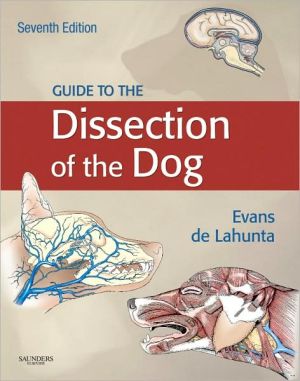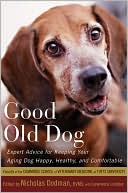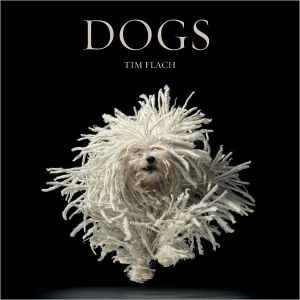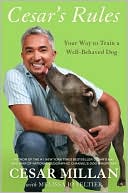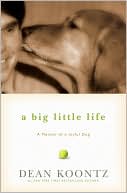Guide to the Dissection of the Dog
This practical guide facilitates a thorough dissection of the dog to learn basic mammalian structure and specific canine features. Emphasizing anatomical knowledge, each chapter presents self-contained guidance on the dissection of a specific body part, allowing the reader to perform these dissections in any sequence preferred. Descriptions are based on the dissection of embalmed, arterially injected adult dogs of mixed breeds, and the anatomical terms used in the book come from the Nomina...
Search in google:
This practical guide facilitates a thorough dissection of the dog to learn basic mammalian structure and specific canine features. Emphasizing anatomical knowledge, each chapter presents self-contained guidance on the dissection of a specific body part, allowing the reader to perform these dissections in any sequence preferred. Descriptions are based on the dissection of embalmed, arterially injected adult dogs of mixed breeds, and the anatomical terms used in the book come from the Nomina Anatmica Veterinaria.• Content is organized by specific body part to give readers the ability to work in any sequence. • An introductory chapter explains commonly used terms in anatomy in great detail. It also discusses the moral implications of dissecting dogs for canine gross anatomy, as well as the procedures and guidelines used in dissection. • A list of figures and tables with page numbers is included in the front of the book. • A list of references is provided in the back of the book to provide opportunities for further study.• New CAT scans are provided to show internal anatomical features that can only be seen by this method. • More than 300 illustrations — including new and updated drawings — depict each dissection procedure, step-by-step. • Updated content includes recommendations from individuals in the global veterinary community. Doody Review Services Reviewer:Kevin K Au, BSc BVMS(University of Illinois College of Veterinary Medicine)Description:This book aims to guide readers through the complete dissection of a dog outlining the most important anatomic features. This is an update from the sixth edition published six years earlier.Purpose:It provides step-by-step instruction on the complete dissection of a dog with a thorough description of the most important anatomic features in addition to providing information on their function and purpose. It also successfully links the anatomic dissection with clinical practice by providing concurrent information on live dog palpation. Audience:The book is targeted primarily at veterinary and anatomy students. However, as a surgical resident and practitioner, I found it a particularly useful overview of anatomy as the focus on practical dissection allows the authors to avoid the excess detail that is necessary in dedicated anatomy texts. Features:The chapters focus on different regions of the dog, such as the head or the abdomen, pelvis, and pelvic limb. This allows progressive dissection of a region without jumping from one area of the body to another. The illustrations are the best feature of this book, and they are accurate, clear, and easy to follow. The figures are in color, which allows clear separation of body systems such as vascular structures and the nervous system. The text thoroughly describes not only the anatomy, but also the function of different structures such as the origin, insertion, action, and innervation of separate muscles.Assessment:This has been one of my most used textbooks since my first exposure to the fourth edition during veterinary school. It still finds regular use as it provides easy access to pertinent surgical anatomy in a compact volume. This edition expands greatly on prior editions with the introduction of color illustrations and information on live dog palpation which is of particular use to veterinary students.
List of Illustrations and Tables Introduction Medical Etymology and Anatomical Nomenclature Directional Terms Dissection The Skeletal and Muscular Systems Bones of the Thoracic Limb Muscles of the Thoracic Limb Joints of the Thoracic Limb Bones of the Pelvic Limb Muscles of the Pelvic Limb Joints of the Pelvic Limb Bones of the Vertebral Column Muscles of the Trunk and Neck Joints of the Axial Skeleton The Neck, Thorax, and Thoracic Limb Vessels and Nerves of the Neck Thorax Introduction to the Autonomic Nervous System Heart and Pericardium Vessels and Nerves of the Thoracic Limb The Abdomen, Pelvis, and Pelvic Limb Vessels and Nerves of the Ventral and Lateral Parts of the Abdominal Wall Abdominal Viscera Pelvic Viscera, Vessels, and Nerves Vessels and Nerves of the Pelvic Limb The Head The Skull Structures of the Head The Nervous System Meninges Arteries Veins Brain Spinal Cord References Index
\ From The CriticsReviewer: Kevin K Au, BSc BVMS(University of Illinois College of Veterinary Medicine)\ Description: This book aims to guide readers through the complete dissection of a dog outlining the most important anatomic features. This is an update from the sixth edition published six years earlier.\ Purpose: It provides step-by-step instruction on the complete dissection of a dog with a thorough description of the most important anatomic features in addition to providing information on their function and purpose. It also successfully links the anatomic dissection with clinical practice by providing concurrent information on live dog palpation. \ Audience: The book is targeted primarily at veterinary and anatomy students. However, as a surgical resident and practitioner, I found it a particularly useful overview of anatomy as the focus on practical dissection allows the authors to avoid the excess detail that is necessary in dedicated anatomy texts. \ Features: The chapters focus on different regions of the dog, such as the head or the abdomen, pelvis, and pelvic limb. This allows progressive dissection of a region without jumping from one area of the body to another. The illustrations are the best feature of this book, and they are accurate, clear, and easy to follow. The figures are in color, which allows clear separation of body systems such as vascular structures and the nervous system. The text thoroughly describes not only the anatomy, but also the function of different structures such as the origin, insertion, action, and innervation of separate muscles.\ Assessment: This has been one of my most used textbooks since my first exposure to the fourth edition during veterinary school. It still finds regular use as it provides easy access to pertinent surgical anatomy in a compact volume. This edition expands greatly on prior editions with the introduction of color illustrations and information on live dog palpation which is of particular use to veterinary students.\ \
